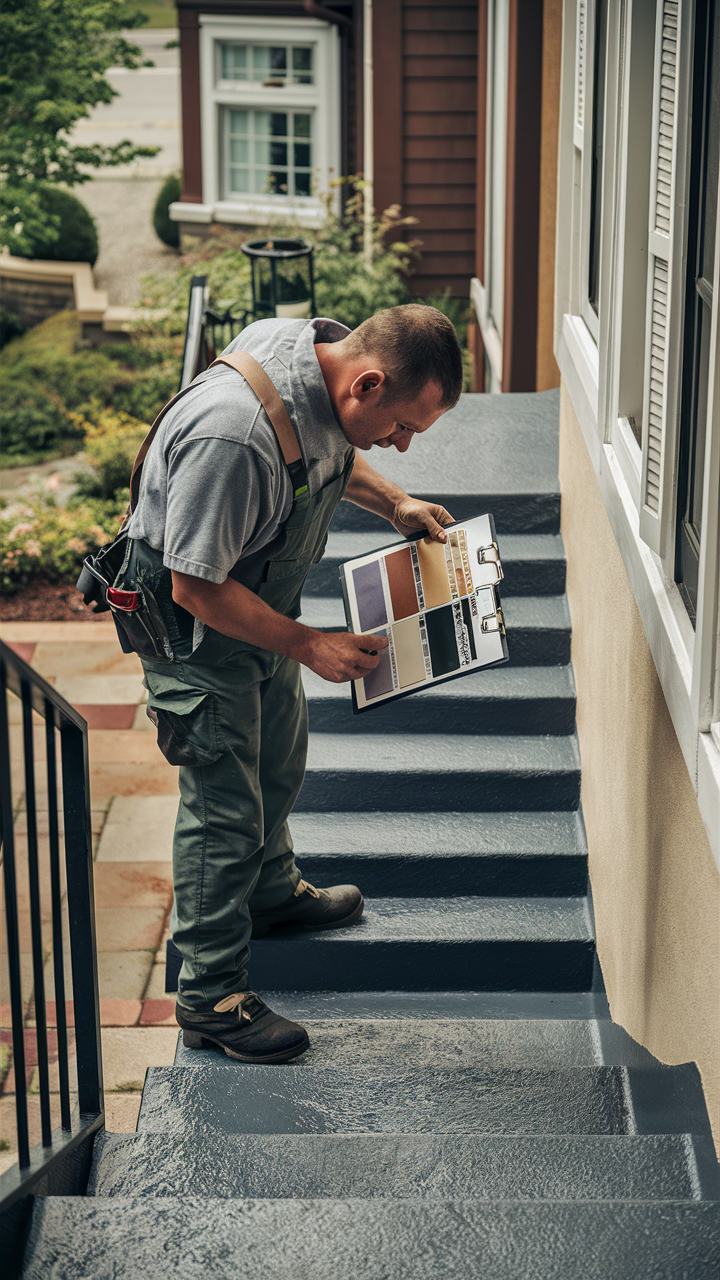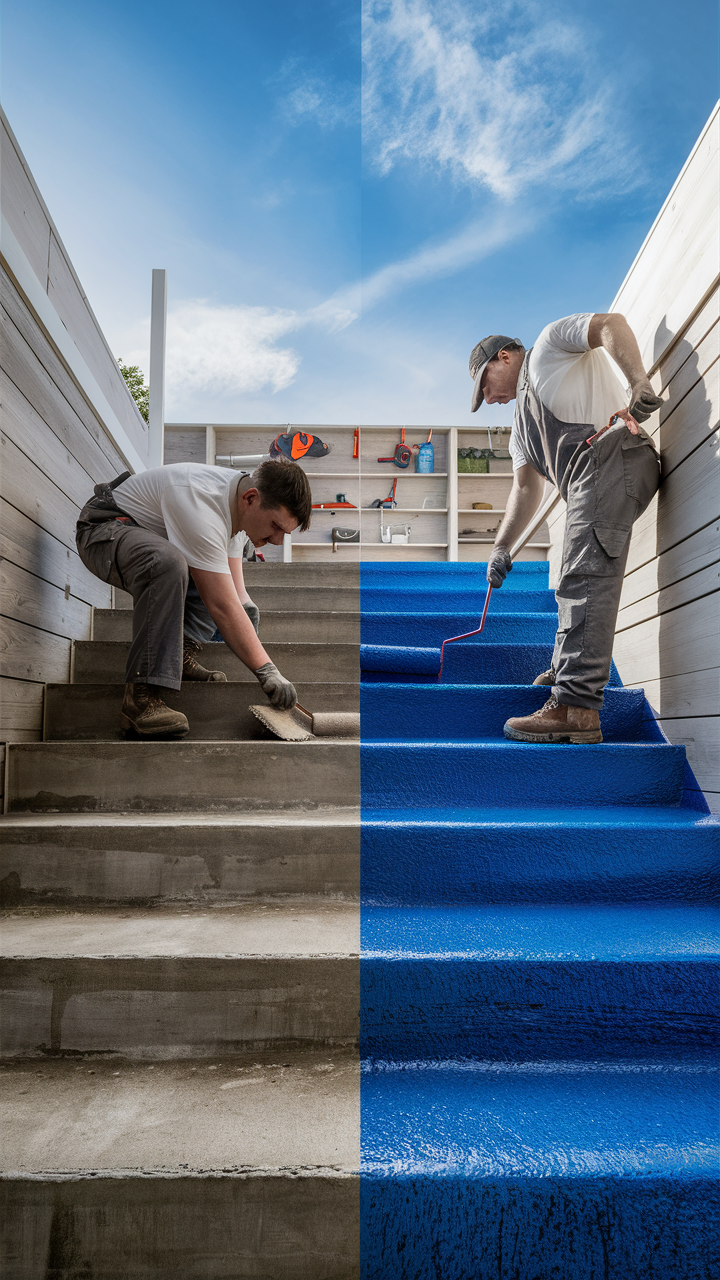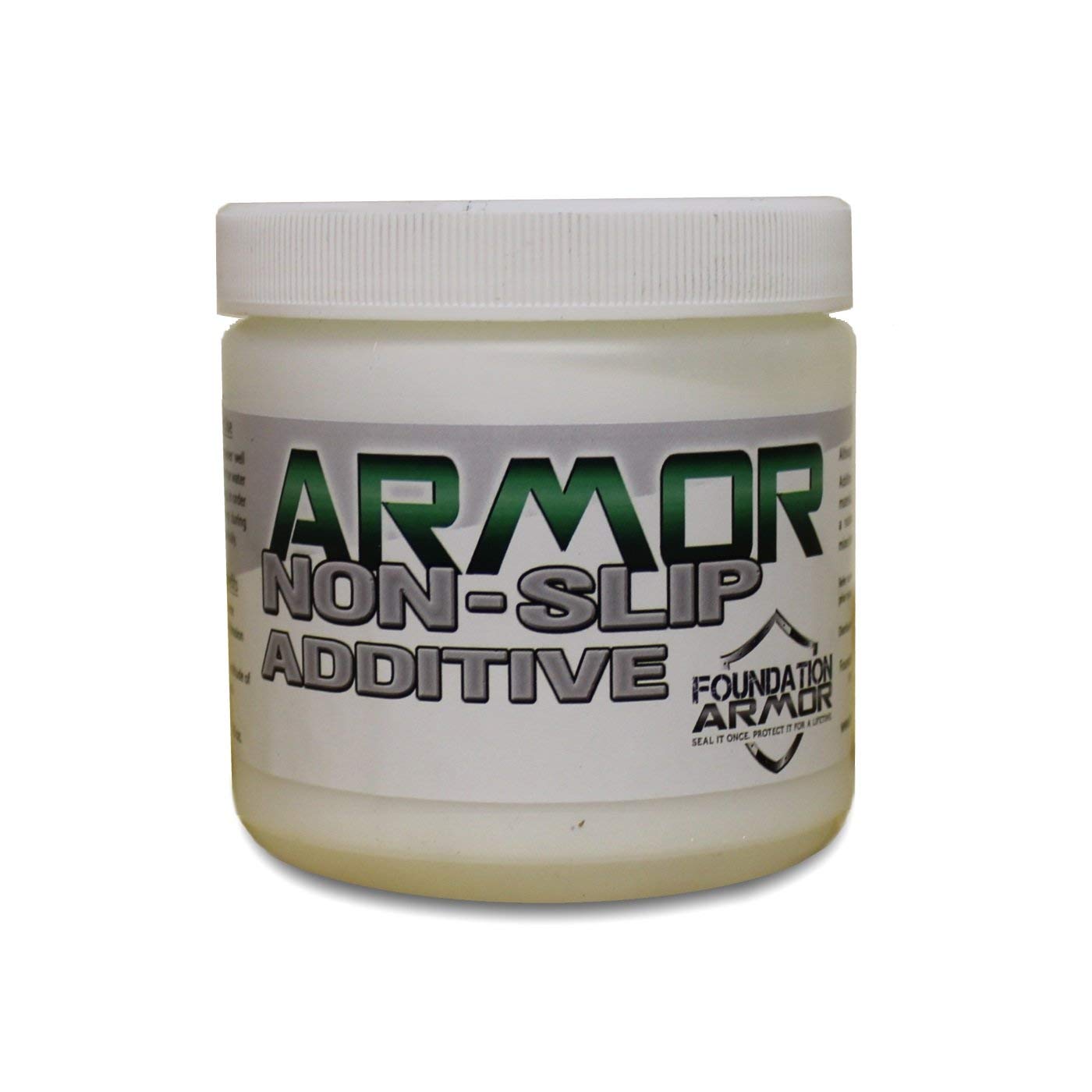Introduction
Concrete stair coatings are a vital upgrade for enhancing the safety and aesthetics of your home. Whether you’re looking to fortify your patio steps or revamp an entire walkway, selecting the right type of coating can make all the difference. These coatings not only protect against wear but also add a non-slip texture that helps prevent accidents on dangerous concrete stairs that need attention. With options ranging from epoxy primer to urethane anti-slip solutions, the right choice ensures long-term durability and safety.
Various products like CAP Concrete Coatings provide a plethora of benefits, including a lifetime warranty on their applications. These coatings are especially important in areas prone to rain or puddles, snow and ice, or where there might be excessive pine needles, creating slip hazards. By applying a paint coating or a polytek system to your stairs, you can achieve not just improved safety but also enhance the visual appeal with a range of colors from the different sand mixes offered by professional installers like certified Penntek installers at CAP. The right coating can transform your steps into a safer, more stylish part of your home environment.
Key Takeaways
- Concrete stair coatings enhance both safety and aesthetics, offering protection against wear and adding non-slip textures.
- CAP Concrete Coatings and similar products provide significant benefits including a lifetime warranty, improving safety in conditions like rain, snow, or debris.
- Epoxy and urethane floor coatings are crucial for their durability, making them suitable for high-traffic areas and harsh weather conditions.
- The selection of the right coating involves understanding the specific needs of your concrete surfaces, with options like urethane and acrylic providing unique benefits.
- Color customization options available with epoxy and acrylic coatings allow for aesthetic enhancement to match outdoor décor.
- Regular maintenance and professional application are essential for ensuring the longevity and effectiveness of the coatings, keeping concrete steps safe and visually appealing.
The Importance of Concrete Coatings

Concrete coatings are crucial for maintaining the durability and safety of your surfaces. Walkways and stairs coated with high-quality epoxy or acrylic coatings offer superior protection. These coatings help prevent unsightly or dangerous concrete stairs from becoming hazardous. Moreover, concrete coating will add an extra layer of security to your residential property.
| Feature | Details | Recommended Products |
|---|---|---|
| Durability | Epoxy coatings are highly durable, resistant to heavy traffic, and suitable for harsh weather conditions. | EpoxyShield, SureStep |
| Safety | Non-slip additives are essential for preventing slips, especially in wet conditions. | Seal-Krete |
| Visual Appeal | Available in various finishes and colors, allowing customization to match exterior décor. | Epoxy Dura-Kote, Roll on Rock |
| Cost-Effectiveness | Typically ranges from $3 to $7 per square foot, making it an affordable option for large areas. | DIY Epoxy Coating Kits |
| Application Process | Includes cleaning, priming (if necessary), and applying multiple thin layers. Professional installation recommended for best results. | |
| Maintenance | Requires minimal upkeep; regular cleaning and occasional touch-ups maintain appearance and safety. |
These coatings are not just practical but also enhance the aesthetic appeal of outdoor spaces. When applied correctly, epoxy coatings provide a long-lasting, durable surface that withstands environmental stress while offering a stylish finish.
Enhancing Safety with Non-Slip Concrete Coatings
Non-slip concrete coatings are essential for outdoor concrete stairs and walkways. Smooth concrete can be dangerous if left untreated, particularly in wet conditions. An anti-slip concrete coating is the best solution to ensure safety. This layer provides a durable, textured finish to keep slick surfaces safe and user-friendly.
Extended Durability with Epoxy Floor Coatings
Epoxy floor coatings are known for their robustness and longevity. Applying an epoxy floor coating to your concrete steps ensures they withstand harsh weather and constant use. Epoxy coatings for concrete offer protection against cracks and other existing damages. Their durable nature makes them an ideal choice for high-traffic areas.
Choosing the Right Floor Coating

Selecting the appropriate floor coating requires understanding the specific needs of your stairs and walkways. Various options like urethane and acrylic coatings each have their unique benefits. A reliable coating will add the needed durability and aesthetic appeal to your concrete surfaces. For added safety, non-slip coatings for concrete steps are highly recommended.
Top Considerations for Epoxy Concrete Stair Coatings
-
Durability and Safety: Epoxy coatings are highly durable and enhance safety by providing a non-slip surface. It’s essential to choose a coating that can withstand specific environmental conditions such as UV exposure and temperature fluctuations.
-
Aesthetic Flexibility: Epoxy coatings offer a wide range of colors and finishes, allowing customization to match the aesthetics of your home or building. Options like metallic finishes are popular for creating a modern, high-gloss look.
-
Application Process: Proper application is crucial for the longevity of the coating. This typically involves thorough surface preparation, including cleaning and etching the concrete to ensure good adhesion, followed by a proper curing period.
-
Maintenance: While epoxy coatings are relatively low maintenance, regular cleaning and occasional touch-ups will help maintain the appearance and safety of the coated surface. Epoxy is easy to clean and resistant to stains, making it practical for high-traffic areas.
-
Cost-Effectiveness: Epoxy coatings are an affordable option, especially considering their durability and the protection they offer. Prices can vary depending on the area covered and the type of epoxy used, but generally, it remains a cost-effective solution for enhancing outdoor concrete surfaces.
This list helps ensure that when choosing an epoxy coating for outdoor stairs, you consider both performance and aesthetic needs effectively.
The Benefits of Urethane and Acrylic Coatings
Urethane and acrylic coatings are popular for their flexible and durable properties. Urethane floor coatings are resilient against wear and tear, making them suitable for residential areas. On the other hand, acrylic coatings are easier to apply and offer a wide range of color options, enhancing the look of your concrete floor coatings.
Ensuring Long-Term Protection with Concrete Sealers
Concrete sealers are integral to extending the life of your concrete surfaces. Sealing your concrete steps with aliphatic urethane or other premium sealers adds an extra layer of protection. This not only maintains the aesthetics but also fortifies the concrete against harsh environmental conditions. Concrete sealer applications are essential for both indoor and outdoor concrete surfaces.
Best Practices for Coating Concrete Steps

Proper application of coatings to concrete steps ensures optimal performance and longevity. Whether using epoxy, acrylic, or urethane floor coatings, it’s essential to prep the surface thoroughly. Removing any existing damage or cracks before applying the coating is crucial. For the best results, professional installers at reliable companies like CAP Concrete Coatings provide top-notch services.
Preparing Concrete Steps for Coating
Proper preparation involves cleaning the surface of any dirt or debris and fixing any cracks. It’s important to ensure a smooth application process for the coating. The coating will bond better to a prepped surface, ensuring longer-lasting results. CAP Concrete Coatings installers are skilled in preparing surfaces for coating application.
Applying Epoxy and Non-Slip Coatings
The application process involves carefully applying the chosen floor coating evenly across the surface. Non-slip coatings are especially critical for outdoor stairs and walkways. These coatings provide a textured surface that reduces the risk of slips. Experienced installers at CAP Concrete Coatings ensure a seamless application that stands the test of time.
“Proper application of coatings to concrete steps ensures optimal performance and longevity. Whether using epoxy, acrylic, or urethane floor coatings, it’s essential to prep the surface thoroughly. Removing any existing damage or cracks before applying the coating is crucial. For the best results, professional installers at reliable companies like CAP Concrete Coatings provide top-notch services.”
Ensuring Aesthetic Appeal with Color Options

Choosing the right color for your concrete coatings can significantly enhance the visual appeal of your steps and walkways. Several color options are available for epoxy and acrylic coatings, allowing homeowners to customize their outdoor concrete surfaces. Selecting a color that complements the surrounding area can make a significant difference.
Customizing Your Concrete Coatings
Acrylic coatings offer versatility in terms of color customization. Homeowners can choose from a variety of shades to match their outdoor décor. Epoxy floor coatings also provide various hues that add vibrancy to concrete surfaces. This customization adds not only safety but also a personalized touch to your property.
Maintaining Aesthetics with Durable Coatings
Durability does not compromise aesthetics when it comes to modern concrete coatings. Epoxy and urethane coatings hold up well against daily wear while maintaining their visual appeal. Regular maintenance and proper application ensure that the coatings remain vivid and intact. This approach keeps your concrete steps both safe and stylish for years to come.
- Slip Resistant Acrylic Sealers
- Epoxy Coatings
- Urethane Coatings
- Up to 5 Gallons
Conclusion
In summary, concrete stair coatings significantly boost both the safety and visual charm of your property. Choosing the right coating, from semi-gloss finishes to dura grip textures, can protect your outdoor areas against common hazards such as slippery surfaces and wear. Products like CAP Concrete Coatings ensure that your stairs are not only more secure but also aesthetically pleasing, offering customization options like desired color from sand mixes offered by Polytek.
The benefits of investing in high-quality concrete paint and anti-skid layers are undeniable, providing solid footing and reducing the risk of accidents. With the professional help of certified Penntek installers at CAP, you can rest assured that the coatings are applied correctly, which guarantees enhanced durability and maintenance of your stairs’ appearance for years. Concrete stair coatings are an essential consideration for any homeowner looking to maintain their property’s safety and enhance its overall value.
James Dunnington leads the James Dunnington Collection, featuring five unique blogs: a practical Pet Care Guide, an enlightening Ancient History Blog, a resourceful Home Improvement Guide, a cutting-edge Tech Innovation Guide, and a strategic Online Money Making platform. Each site delivers valuable insights designed to empower and inform. For updates and more tips, visit our Contact Us page to sign up for our newsletter, ensuring you never miss out on the latest content from any of these dynamic fields.

